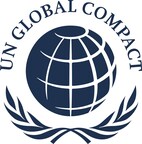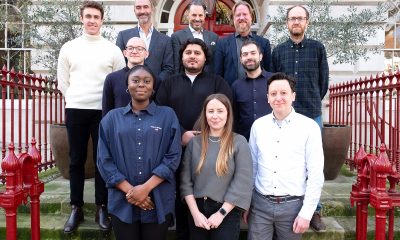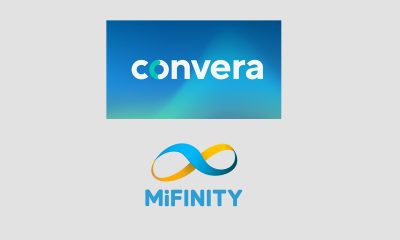Fintech PR
Acoustic Wells wins 2019 MIT $100K Entrepreneurship Competition

 Reading Time: 4 minutes
Reading Time: 4 minutes
Acoustic Wells, a startup born in a laboratory at MIT that has created a new internet of things (IoT) control solution for oil wells that optimizes production while drastically reducing methane emissions, beat out seven finalists to win the Robert P. Goldberg $100,000 grand prize at last night’s MIT $100KEntrepreneurship Launch Finale held on the MIT campus.
Now in its 30th year, the MIT $100K Entrepreneurship Competition is an economic barometer for sectors of innovation that are receiving funding by venture capitalists. To date, the MIT $100K has facilitated the birth of more than 160 companies, which have gone on to raise $1.3 billion in venture capital and build $16 billion in market capitalization. More than 30 MIT $100K startups have been acquired by major companies, such as Oracle, Cisco, 3M, and Merck. Over 4,600 people are currently employed by MIT $100K companies. Recent IPOs include Akamai (AKAM) and Hubspot (HUBS).
A major challenge in the operation of oil and gas wells is the ability to monitor the operating conditions and health of pumping equipment without the need for prohibitively expensive equipment or daily inspections. To address this issue, Acoustic Wells has developed a patent-pending, acoustic-based control method that is capable of determining precisely down-hole conditions using a simple and affordable surface sensor. Acoustic Wells’ simple plug-and-play hardware processes the data at the edge and seamlessly connects to their cloud platform using long range IoT networks. Artificial intelligence algorithms automatically monitor the pump operation and optimize the production by adjusting the pumping rate while also predicting potential critical failures of the system.
Acoustic Wells’ founding team members are:
Dr. Sebastien Mannai, CEO, MIT PhD 2018 in Aerospace Engineering. He is currently engaged in postdoctoral work on AI signal processing in the Gas Turbine Laboratory of the Aerospace Department at MIT.
Dr. Charles-Henri Clerget, COO, who is currently engaged in postdoctoral work in the Earth Resources Laboratory with the Mathematics Department at MIT where he focuses on the big data analysis of drilling operations.
Louis Creteur, CTO and an industrial automation solution specialist who currently serves as IoT and Cloud Architect at Leanbox.
“We bring cutting edge technology in a simple package to help every oil and gas producer optimize their assets while reducing their emissions,” says Dr. Mannai.
A panel of judges chose Acoustic Wells based on value creation, value capture, and technological differentiation. Judges included: TJ Parker, Co-Founder & CEO, PillPack; Mira Wilczek, President & CEO, Cogo Labs; Thomas Collet, President, CEO & Director, Phrixus Pharmaceuticals; Tanguy Chau, Venture Investor; and Katie Rae, CEO & Managing Partner, The Engine.
A $10,000 Audience Choice Award was presented to The Read Read, one of the finalist teams. The Read Read has created a patent pending physical device that allows blind and low-vision children to independently learn phonics and braille, and gain early literacy to keep pace with their sighted peers. Users simply touch the braille and large-print letter manipulatives, and get immediate audio feedback. It was developed at the Harvard Innovations Lab, and piloted at the Perkins School for the Blind and the Harvard Graduate School of Education.
Six additional finalists included:
AgroBeads® are biodegradable spheres made from natural ingredients that hydrate plants according to their needs and support their growth and healthy development. Plants not only grow, but they do it faster, and healthier. AgroBeads® does not pollute the environment, improves the chances of germination, and contributes to the development of technologies that impact public health.
Mechanodontics is a new method that can be used instead of braces or aligners that moves teeth independently. Placed behind teeth so they cannot be seen, this method considerably shortens treatment time, allows for easier cleaning than traditional braces, and is more comfortable. This technology, which employs state-of-the-art simulations, allows orthodontists to apply the optimal amount of force to each tooth, easily fixing even complicated mal-alignments that are not correctable with aligners.
Myco Diagnostics is creating low-cost, robust medical diagnostics, using thermostable binding proteins to capture disease biomarkers from patient samples. They are producing point-of-care assays for the detection of urine-based biomarkers of tuberculosis, allowing them to address patient groups ill-served by traditional TB tests.
Posh offers a bot-creation platform using patent-pending technology that makes it easy to tailor a custom chatbot to meet companies’ needs. Not only can Posh answer company FAQs, but it can also help a company’s customers manage their accounts and convert prospects into sales. Posh does this while interacting with customers via the channels they prefer: across text, voice, social media and the web.
Qtech The team’s MIT-educated scientists have invented 3D Nano structured air filters that provide 20x filtration performance, 10x lifetime, and are recyclable at an estimated similar cost of a traditional HEPA filter. Filters catch not only flower pollens, but also bacteria and even viruses, and there is no need for replacements in years.
Stratagen Bio develops oxygen sensors to enable personalized cancer therapies, addressing the unmet clinical need of identifying low-oxygen treatment resistant tumors. They are enabling physicians to identify which cancer patients require a customized treatment to overcome resistance and improve outcomes and survival.
John Harthorne, a founder and former CEO of MassChallenge, served as the keynote speaker. Harthorne’s team, Robopsy, won the MIT $100K in 2007. He and Akhil Nigam went on to co-found MassChallenge, a not-for-profit, in 2010. Based on the MIT $100K model, their zero-equity startup accelerator has since gone global and has accelerated 1,975 startups that have raised more than $4.3 billion in funding, generated more than $2.5 billion in revenue, and created more than 121,000 total jobs. Harthorne now serves on MassChallenge’s Global Board of Directors.
Since its debut as the MIT $10K Entrepreneurship Competition in 1989, it has grown to include three independent contests – Pitch, Accelerate, and Launch – from September through May. Each contest focuses on developing specific founding skills. For each semi-finalist contender, the MIT $100K brings together a network of resources that includes mentorship from venture capitalists, serial entrepreneurs, corporate executives, and attorneys; media exposure; prototyping funds; business plan feedback; and discounted services. Altogether, almost $1M in non-dilutive prize money and other financial resources are awarded to help these new ventures accelerate. For more on the MIT $100K, please visit: www.mit100k.org
SOURCE MIT Sloan School of Management
Fintech
Fintech Pulse: Your Daily Industry Brief – April 15, 2025 – Featuring Meliuz, Marshmallow, Payfinia, Revolut

Discover the top fintech stories for April 15, 2025, including Méliuz’s Bitcoin strategy, Marshmallow’s new funding round, API innovation trends, Payfinia’s executive expansion, and a Revolut alumni launching a new venture. Get detailed insights, expert commentary, and opinion-driven analysis in today’s edition of Fintech Pulse: Your Daily Industry Brief.
Introduction: A Day of Bold Moves and Bigger Bets
Welcome to your April 15, 2025 edition of Fintech Pulse: Your Daily Industry Brief — your go-to source for industry-shaking developments, bold strategic pivots, and the quietly disruptive undercurrents shaping the future of financial services.
Today’s news round-up dives deep into a Brazilian fintech doubling down on Bitcoin, a UK-based insurtech startup raising fresh funds amid tough market conditions, and the accelerating trend of API-centric fintech architecture. We also look at Payfinia’s heavy-hitting executive hires and a stealthy talent migration from Revolut that hints at another fintech powerhouse in the making.
From Latin America’s crypto experimentations to Europe’s competitive insurtech landscape, and from digital banking’s tech arms race to the new elite shaping fintech’s next wave — today’s headlines are as much about evolution as they are about revolution.
Méliuz Goes All-In on Bitcoin: A Calculated Risk or Crypto Recklessness?
Source: Reuters
Brazil-based fintech Méliuz is making headlines with its newly proposed strategy to expand its Bitcoin reserves. This isn’t a fluke or a passing phase — this is a calculated move that plants Méliuz squarely in the camp of crypto-aligned fintechs seeking to build value beyond fiat.
Méliuz’s board has greenlit a proposal to integrate Bitcoin deeper into its treasury, turning what was once a fringe experiment into a core part of its financial strategy. The plan will go before shareholders on April 30, where it’s likely to pass unless something drastic shifts investor sentiment.
“Holding Bitcoin is no longer about speculation,” argues Méliuz CEO Israel Salmen. “It’s a hedge against systemic volatility and an enabler of decentralized value.”
— Source: Reuters
Let’s be clear: this isn’t just about Bitcoin. This is about trust, transparency, and long-term value preservation in an inflationary, volatile global economy. Méliuz’s move mirrors strategies seen in larger companies like MicroStrategy and even Tesla during their crypto flirtations. However, Méliuz’s size and geography make this bolder — and riskier.
Brazil’s economic climate, marked by inflationary pressures and a tech-savvy population, makes it a fertile ground for crypto experimentation. But with crypto regulation in Latin America still a mixed bag, Méliuz is walking a high wire. One misstep, and the fallout could be swift. On the flip side, if crypto prices soar again, Méliuz could see returns that dwarf traditional asset classes.
Commentary:
This strategy signals a maturing fintech ecosystem in Brazil, where companies aren’t just playing catch-up but are instead crafting frontier strategies. While the jury’s out on whether Bitcoin is truly a “digital gold” or just volatile vaporware, Méliuz is betting on the former — and we’ll be watching closely to see if that bet pays off or backfires.
Marshmallow Raises £15 Million: The Resilient Rise of Insurtech
Source: Sifted
In a financial climate that’s tested even the hardiest of startups, UK-based insurtech Marshmallow has pulled off something rare — it’s raised £15 million to support its expansion strategy.
Founded by identical twins Alexander and Oliver Kent-Braham, Marshmallow has made a name for itself by offering car insurance to underserved communities, particularly immigrants, using data and AI to assess risk more fairly.
Now, with fresh capital on hand, the startup plans to continue its international expansion and broaden its product portfolio. This comes at a time when many fintechs are trimming fat, scaling back operations, and focusing on survival rather than growth.
“We’re building a different kind of insurance company — one that doesn’t penalize people for who they are,” said co-founder Alexander Kent-Braham.
— Source: Sifted
What makes this raise notable? It’s a Series B extension — not a new round — and Marshmallow is doing it without massive layoffs, without pivoting to profitability narratives, and without the usual desperation that has gripped post-2022 fintech fundraising.
Commentary:
Marshmallow’s win here underscores the power of mission-driven fintechs. Insurtech has been plagued with overpromising and underdelivering, but Marshmallow has stayed focused on user-centric outcomes and scalable technology. In a space bloated with VC cash and churn, Marshmallow is emerging as one of the few that could actually deliver sustainable returns.
The API Revolution: Fintechs Shift to Modular, Scalable Tech Stacks
Source: Yahoo Finance
APIs are not new. But in fintech, they are becoming the backbone of modern finance — not just for innovation, but for survival.
According to new reports, fintech companies are doubling down on API strategies to create scalable digital platforms, drive partnerships, and enable faster product rollouts. The trend is not just limited to startups; even mid-sized and larger institutions are embracing API-first infrastructure.
“Today’s fintechs are building Lego-block platforms — where everything is composable, adaptable, and modular,” said financial analyst Priya Menon.
— Source: Yahoo Finance
This modularity allows financial platforms to integrate with third-party services, launch new products faster, and create more seamless user experiences. Think of it as plug-and-play finance — the future of banking and payments.
Examples include:
-
Neobanks using third-party APIs for KYC/AML onboarding.
-
Lenders plugging into open banking APIs for credit assessments.
-
Wealthtech platforms integrating with robo-advisory engines on demand.
Commentary:
We are witnessing the Amazon Web Services moment for fintech. Just as AWS turned server infrastructure into a utility, APIs are doing the same for financial services. The winners of the next decade won’t be the ones with the most capital but the ones with the most composable, collaborative architecture.
Payfinia’s Power Play: Assembling a Dream Team of Fintech Heavyweights
Source: BusinessWire
In another move signaling growth ambitions, Payfinia, a rising player in the digital payments space, has announced a series of executive-level hires from across the fintech and traditional financial services industries.
New appointees include leaders from Stripe, Visa, and PayPal — a who’s who of payment royalty. This strategic hiring blitz is meant to turbocharge Payfinia’s expansion into North America and Asia-Pacific, with a focus on enterprise-grade payment infrastructure and B2B solutions.
“We’re not just building a company — we’re building an institution,” said Payfinia CEO Natalie Wexler.
— Source: BusinessWire
The new executives will be tasked with expanding partnerships, improving core payment technologies, and unlocking cross-border transaction capabilities. With global B2B payments projected to top $200 trillion by 2028, Payfinia is playing for keeps.
Commentary:
Talent is strategy. In the high-stakes world of fintech, executive leadership often makes or breaks a growth trajectory. Payfinia’s aggressive poaching of top-tier talent from incumbents shows it’s not content to nibble around the edges — it wants to be a category-defining company.
A Revolut Graduate Is Building a New Fintech Army
Source: eFinancialCareers
Nik Storonsky, Revolut’s enigmatic CEO, has a track record of cultivating aggressive, data-driven fintech leaders. Now, one of his star alumni is making moves, reportedly poaching key Revolut staffers to form a new stealth fintech.
While details are sparse, sources close to the matter suggest the new venture will focus on financial automation for SMEs, a long-underserved segment in digital banking. Ex-Revolut staff are being wooed with equity-heavy compensation packages and promises of building a “more humane” fintech.
“We learned how to scale ruthlessly at Revolut — now we want to build something with soul,” said a source familiar with the new venture.
— Source: eFinancialCareers
This kind of exodus isn’t new. PayPal begat the PayPal Mafia. Klarna has its alumni. Now, Revolut’s elite are planting the seeds of what could be the next breakout fintech startup.
Commentary:
Watch this space. These early movements have the fingerprints of something big. Revolut’s culture is intense and often controversial, but it produces builders. If this new venture can blend Revolut’s speed with a more balanced ethos, it could be one of 2025’s biggest stories.
Conclusion: From Crypto Treasuries to API Architectures — Fintech’s Future Is Now
Today’s fintech headlines make one thing abundantly clear: the industry is evolving faster than ever, driven by bold decisions, daring leaders, and next-gen tech stacks.
Méliuz’s Bitcoin move reflects a new wave of treasury management. Marshmallow’s funding round speaks to the endurance of purpose-driven fintechs. API modularity is shaping how fintechs build, not just what they build. Payfinia is making a power play through human capital, and Revolut’s alumni are hinting at the birth of another unicorn.
This isn’t just the daily news — it’s a snapshot of a sector in motion, flexing its muscles and preparing for its next metamorphosis.
Stay tuned. The future of finance is being written in real time — and you’re reading the first draft.
The post Fintech Pulse: Your Daily Industry Brief – April 15, 2025 – Featuring Meliuz, Marshmallow, Payfinia, Revolut appeared first on News, Events, Advertising Options.
Fintech PR
FNZ Shareholder feud: Board’s oppressive tactics persist as FNZ extends equity deadline without addressing core concerns
LONDON, April 15, 2025 /PRNewswire/ — FNZ has extended the deadline for three “catch-up” equity offers to 14 May 2025, in what appears to be an effort to manage growing discontent among employee shareholders.
Impacted shareholders, however, say the extension fails to address the fundamental issues: significant dilution, lack of transparency, conflicts of interest on the Board, uncommercial terms, and financial barriers that effectively exclude them from participating.
The three offers relate to equity raises in May 2024, August 2024, and most recently 12 April 2025. Together, these capital raisings have diluted employee shareholders by over US$4.5 billion – including US$1.5 billion from the most recent raise of US$500 million.
Despite the magnitude of these transactions, affected shareholders were not notified of the dilutive impact until early 2025 – months after the first two raises had already occurred. Notices regarding the 2024 raises were only issued in February this year, giving shareholders just 30 days to respond. FNZ has since extended this deadline three times, culminating in the new May cut-off.
But former employees say the real issues run deeper.
“It’s not about having more time,” said one shareholder, who asked to remain anonymous.
“The documents are complex, and I’m being asked to contribute money to retain equity that I was originally granted for years of work. That’s never been the model before.”
Another added: “The only reason I’d even consider investing is to avoid being diluted further. But the amount is way beyond what I or any of my colleagues would be able to afford. They know that, so they are just giving themselves a 200% return at the expense of my equity.”
Adding to the unease of the bullying tactics used to muzzle this shareholder class, a social media account on X (formerly Twitter) that had been sharing updates of media coverage about the situation was recently suspended. A new version of the account has since been launched at x.com/nzclassaction.
FNZ was founded in New Zealand in 2003, and remains domiciled there. The board’s actions may violate The New Zealand Companies Act 1993, and the shareholders have said that they will reserve the right to take the dispute to the New Zealand High Court if an agreement cannot be reached.
View original content:https://www.prnewswire.co.uk/news-releases/fnz-shareholder-feud-boards-oppressive-tactics-persist-as-fnz-extends-equity-deadline-without-addressing-core-concerns-302429374.html

Fintech PR
Global Water Electrolysis Equipment Market Booms with 51.3% CAGR | PEM & Alkaline Electrolyzers in Focus – Valuates Reports
BANGALORE, India, April 15, 2025 /PRNewswire/ — Water Electrolysis Equipment Market is Segmented by Type (PEM Electrolyzer, Alkaline Electrolyzer), by Application (Power to Gas, Chemical Industry and Refining, Metallurgy and Steel Industry, Hydrogen Refueling Station, Power Industry, Electronics and Semiconductor).
The Global Water Electrolysis Equipment Market was valued at USD 885 Million in 2023 and is anticipated to reach USD 18840 Million by 2030, witnessing a CAGR of 51.3% during the forecast period 2024-2030.
Claim Your Free Report: https://reports.valuates.com/request/sample/QYRE-Auto-35R13170/Global_Water_Electrolysis_Equipment_Market
Major Factors Driving the Growth of Water Electrolysis Equipment Market:
The water electrolysis equipment market is witnessing robust growth driven by global energy transition efforts and the accelerating adoption of hydrogen as a clean energy carrier. The rising demand across industrial sectors, coupled with strong policy backing and falling system costs, is fueling market expansion. Both PEM and alkaline technologies are gaining ground, with newer entrants exploring solid oxide alternatives. Strategic collaborations, green hydrogen mega projects, and integration with renewables are propelling innovation and commercialization. As hydrogen becomes central to decarbonization, the market is poised for sustained, long-term development across diverse applications.
Unlock Insights: View Full Report Now! https://reports.valuates.com/market-reports/QYRE-Auto-35R13170/global-water-electrolysis-equipment
TRENDS INFLUENCING THE GROWTH OF THE WATER ELECTROLYSIS EQUIPMENT MARKET:
Proton Exchange Membrane (PEM) electrolyzers are significantly contributing to the expansion of the water electrolysis equipment market due to their high efficiency and compact design. These systems are particularly favorable for dynamic operations and intermittent power supply from renewable sources like solar and wind. Their ability to operate at high current densities and produce high-purity hydrogen with rapid startup and shutdown cycles makes them ideal for energy storage and industrial hydrogen demand. Additionally, PEM electrolyzers are witnessing growing deployment in transportation applications, particularly for fuel cell vehicles, thereby expanding the scope of green hydrogen production. As countries push toward decarbonization, PEM electrolyzers play a pivotal role in enabling clean hydrogen ecosystems.
Alkaline electrolyzers are propelling the growth of the water electrolysis equipment market owing to their technological maturity, cost-effectiveness, and large-scale hydrogen production capabilities. These systems are widely used in industries such as chemicals, fertilizers, and metallurgy where continuous hydrogen supply is essential. Their long operational lifespan and lower capital costs compared to PEM systems make them particularly attractive for industrial-scale hydrogen production. Furthermore, governments and industries are revisiting alkaline systems with modernization upgrades to enhance energy efficiency and integrate them with renewable sources. This renewed interest, combined with their historical reliability, is reinforcing alkaline electrolyzers as a cornerstone in scaling up green hydrogen infrastructure.
Power to Gas (P2G) technologies are driving demand for water electrolysis equipment as they enable the conversion of excess renewable electricity into storable hydrogen or synthetic methane. This approach supports grid stability by utilizing surplus electricity and bridging seasonal energy supply gaps. Water electrolysis acts as the fundamental enabler in P2G by splitting water into hydrogen, which can be injected into natural gas pipelines or used directly in industrial applications. As energy transition accelerates, the integration of electrolysis units into P2G systems provides utilities and grid operators with a scalable solution for energy balancing and decarbonization, thereby fueling market growth.
National hydrogen strategies and policy frameworks are catalyzing market adoption. Several countries have introduced subsidies, grants, and regulatory support to encourage investment in electrolysis technologies. These initiatives are not only reducing the financial risks associated with large-scale projects but also boosting industry confidence in long-term hydrogen infrastructure development.
Industrial decarbonization goals are prompting sectors like steel, cement, and chemicals to adopt hydrogen as a clean energy substitute. Water electrolysis provides an efficient, zero-emission method of producing hydrogen, aligning perfectly with corporate ESG targets and carbon neutrality pathways, thereby expanding demand for electrolysis systems.
The global scale-up of solar and wind power installations is creating an environment conducive to electrolysis. These renewable sources supply the required electricity for electrolysis, allowing hydrogen to be produced cleanly and sustainably. The synchronization of electrolyzers with renewable energy grids enhances energy utilization and supports the growth of the hydrogen economy.
Fuel cell vehicles and hydrogen refueling infrastructure are gaining momentum, particularly in public transport and logistics. Electrolysis systems offer a clean method for producing hydrogen fuel on-site, reducing dependence on fossil-based hydrogen and cutting emissions in the transportation sector. This surge in fuel demand propels the electrolyzer market forward.
The adoption of hybrid renewable-electrolyzer systems for energy-intensive industrial processes is becoming a key growth driver. These setups enhance energy efficiency and reduce overall emissions. The seamless integration of electrolyzers into existing industrial ecosystems provides scalability and operational flexibility, expanding their market footprint.
Advancements in manufacturing and economies of scale are driving down the costs of electrolysis units. Innovations in catalyst materials, membrane technology, and modular design are improving system efficiency and lifespan. These trends are making electrolyzers more accessible to a broader range of end users, from SMEs to utilities.
Claim Yours Now! https://reports.valuates.com/api/directpaytoken?rcode=QYRE-Auto-35R13170&lic=single-user
WATER ELECTROLYSIS EQUIPMENT MARKET SHARE:
Global key players of Water Electrolysis Equipment include Nel Hydrogen, Siemens, Plug Power, PERIC Hydrogen Technologies, Hydrogen Pro, etc. The top five players hold a share of about 46%.
China is the world’s largest market for Water Electrolysis Equipment and holds a share of about 37%, followed by Europe and North America, with shares about 31% and 21%, separately.
In terms of product type, Alkaline Electrolyzer is the largest segment, accounting for a share of about 55%.
In terms of application, Power to Gas is the largest field with a share of about 38 percent.
Key Companies:
- Cummins
- Siemens AG
- Teledyne Energy Systems
- EM Solution
- McPhy
- Nel Hydrogen
- TianJin Mainland
- ShaanXi HuaQin
- Beijing Zhongdian
- H2B2
- PERIC Hydrogen Technologies
- LONGi Green Energy Technology
- Sungrow Power Supply
- Hydrogen Pro
- Plug Power
- Cockerill Jingli Hydrogen
- Thyssenkrupp AG
- Sunfire
- SANY Hydrogen
- Shandong Saikesaisi Hydrogen Energy
- CIMC GH2 Technology
- Verde Hydrogen
- SPIC Hydrogen Technology
Purchase Regional Report: https://reports.valuates.com/request/regional/QYRE-Auto-35R13170/Global_Water_Electrolysis_Equipment_Market
SUBSCRIPTION
We have introduced a tailor-made subscription for our customers. Please leave a note in the Comment Section to know about our subscription plans.
DISCOVER MORE INSIGHTS: EXPLORE SIMILAR REPORTS!
– Water Electrolysis Hydrogen Equipment Market was valued at USD 1801 Million in the year 2024 and is projected to reach a revised size of USD 24170 Million by 2031, growing at a CAGR of 45.6% during the forecast period.
– PEM Water Electrolysis Equipment for Hydrogen Production Market
– Electrolyzed Water Generation Equipment Market
– Seawater Electrolysis System Market
– Alkaline Water Electrolysis System Market
– Water Electrolysis Proton Exchange Membrane Market
– Electrolyzer Market was estimated to be worth USD 308 Million and is forecast to reach approximately USD 999 Million by 2030 with a CAGR of 18.6% during the forecast period 2024-2030.
– Alkaline Water Electrolysis Hydrogen Production System Market
– Electrolytic Water Hydrogen Production Equipment Market
– Catalyst for Hydrogen Production from Water Electrolysis Market was valued at USD 183 Million in the year 2024 and is projected to reach a revised size of USD 1927 Million by 2031, growing at a CAGR of 40.5% during the forecast period.
DISCOVER OUR VISION: VISIT ABOUT US!
Valuates offers in-depth market insights into various industries. Our extensive report repository is constantly updated to meet your changing industry analysis needs.
Our team of market analysts can help you select the best report covering your industry. We understand your niche region-specific requirements and that’s why we offer customization of reports. With our customization in place, you can request for any particular information from a report that meets your market analysis needs.
To achieve a consistent view of the market, data is gathered from various primary and secondary sources, at each step, data triangulation methodologies are applied to reduce deviance and find a consistent view of the market. Each sample we share contains a detailed research methodology employed to generate the report. Please also reach our sales team to get the complete list of our data sources.
GET A FREE QUOTE
Valuates Reports
For U.S. Toll-Free Call 1-(315)-215-3225
WhatsApp: +91-9945648335
Website: https://reports.valuates.com
Blog: https://valuatestrends.blogspot.com/
Pinterest: https://in.pinterest.com/valuatesreports/
Twitter: https://twitter.com/valuatesreports
Facebook: https://www.facebook.com/valuatesreports/
YouTube: https://www.youtube.com/@valuatesreports6753
https://www.facebook.com/valuateskorean
https://www.facebook.com/valuatesspanish
https://www.facebook.com/valuatesjapanese
https://valuatesreportspanish.blogspot.com/
https://valuateskorean.blogspot.com/
https://valuatesgerman.blogspot.com/
https://valuatesreportjapanese.blogspot.com/
Logo: https://mma.prnewswire.com/media/1082232/Valuates_Reports_Logo.jpg
![]() View original content:https://www.prnewswire.co.uk/news-releases/global-water-electrolysis-equipment-market-booms-with-51-3-cagr–pem–alkaline-electrolyzers-in-focus—valuates-reports-302429348.html
View original content:https://www.prnewswire.co.uk/news-releases/global-water-electrolysis-equipment-market-booms-with-51-3-cagr–pem–alkaline-electrolyzers-in-focus—valuates-reports-302429348.html

-

 Fintech PR4 days ago
Fintech PR4 days agoAB Charity Foundation Launches to Pioneer a New Global Model for Public Good Driven by Institutional Trust and Technology
-

 Fintech6 days ago
Fintech6 days agoFintech Pulse: Your Daily Industry Brief – April 09, 2025: Hawk, Ryft, Alinea Invest, Honeycomb Credit, Workcap
-

 Fintech PR4 days ago
Fintech PR4 days agoAccount Payables and Receivables Application Market on a Steady Growth Path: Projected to Grow Through 2030 at CAGR 9.70%
-

 Fintech5 days ago
Fintech5 days agoFintech Pulse: Your Daily Industry Brief – April 10, 2025 Featured Companies: Solid, Transficc, Visa, Notre Dame Fintech Initiative, Leading European Fintech Firms
-

 Fintech PR4 days ago
Fintech PR4 days agoUN Global Compact and private sector move to accelerate progress on SDGs in Africa
-

 Fintech PR4 days ago
Fintech PR4 days agoPhoenix Aviation Capital and AIP Capital Announce the Closing of a Pre-Delivery Payment Facility with up to $300 Million in Total Commitments
-

 Fintech4 days ago
Fintech4 days agoFintech Pulse: Your Daily Industry Brief – April 11, 2025 (Featuring Synapse, Yotta, Citadel Securities, Block, Citi, Valley Bank)
-

 Fintech PR5 days ago
Fintech PR5 days agoGovernance, Risk and Compliance (GRC) Platforms Market on a Steady Growth Path: Projected to Grow Through 2030 at CAGR 13.22%
















